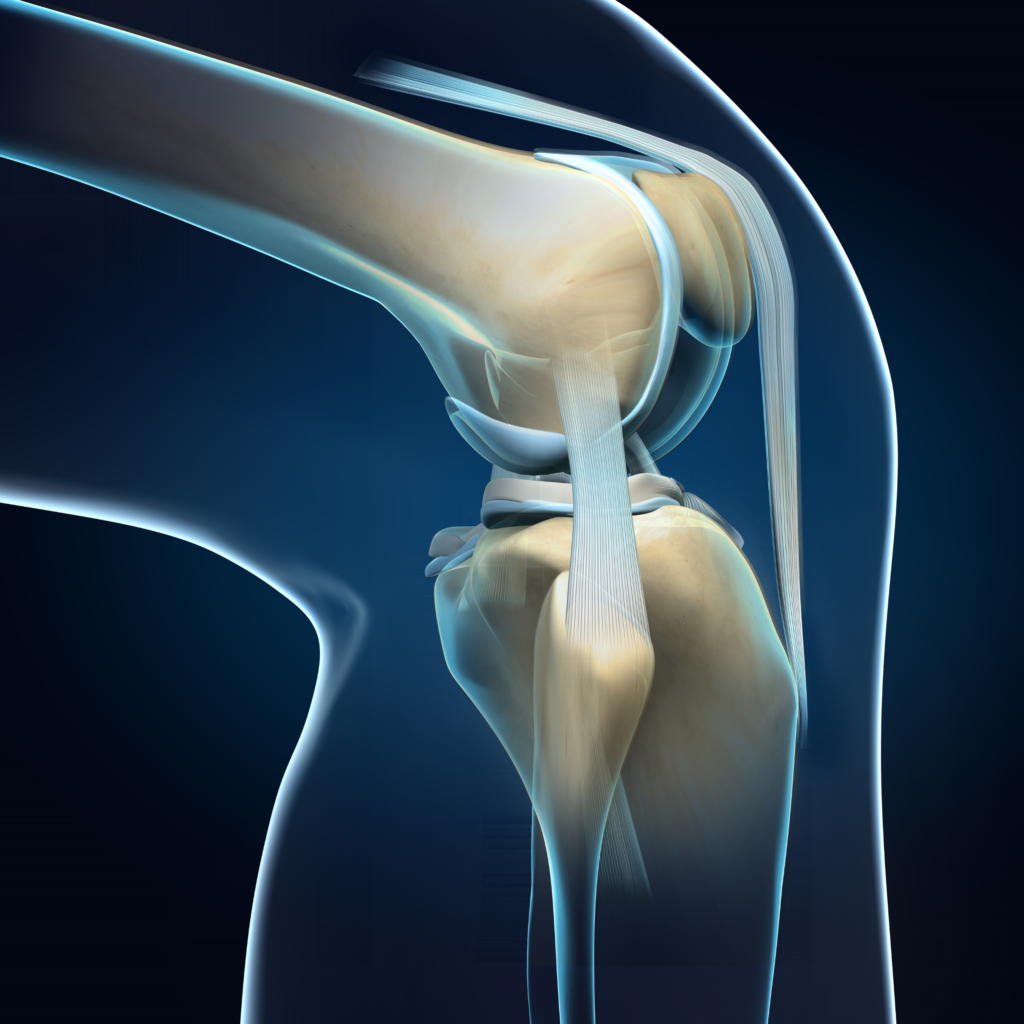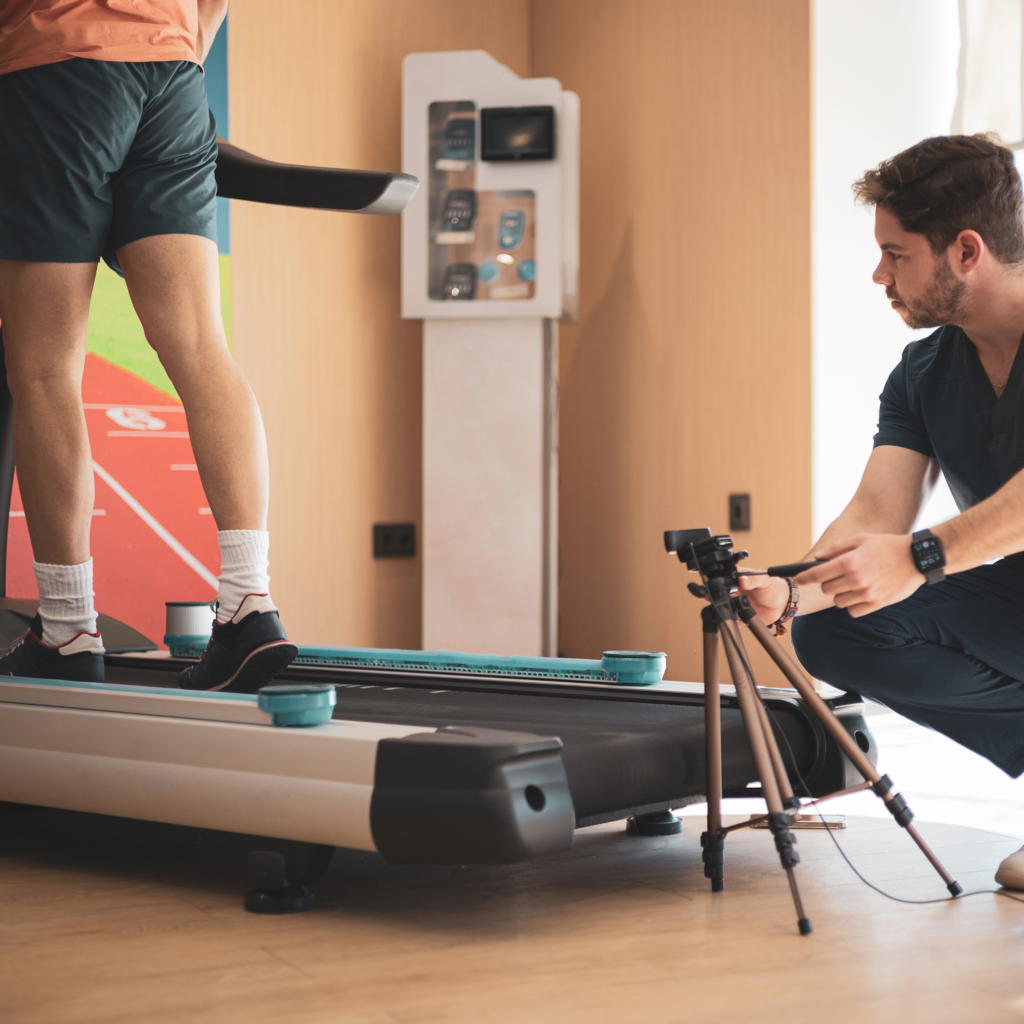
Do you have pain behind, near or around your kneecap?
Does the pain get worse with stairs, running, squatting or even sitting for long periods of time?
You are not alone. Patellofemoral pain is a common condition that:
- affects up to 23% of the general population1
- affects up to 29% of active adolescents2
- is twice as likely to occur in females than males2
Patellofemoral pain is commonly known as “runner’s knee” but is also sometimes called diffuse patellar pain, patellofemoral pain syndrome, chondromalacia patella or anterior knee pain.
What are the signs and symptoms of patellofemoral pain?
People with patellofemoral pain usually experience pain behind or around the kneecap. Some people may experience feelings of giving way or hear some noise (crepitus) coming from the joint.
Patellofemoral pain can affect people of any age and activity level and is commonly aggravated by activities that load the kneecap joint such as:
- going up or down stairs
- jogging
- squatting
- running
- kneeling
- sitting for long periods

What causes patellofemoral pain?
The cause of patellofemoral pain is complex. In most instances, there are multiple factors that contribute to the development and persistence of patellofemoral pain.
One of the most common suggestions is that patellofemoral pain results from changes in the loads on your knee i.e., rapid changes in physical activity or due to excessive loading that may leads to poor movement patterns and mal-tracking of the kneecap.
Factors that may contribute to the development of patellofemoral pain include:
- the structure of your knee
- flat feet
- decreased thigh muscle strength and size
- decreased hip muscle strength
- altered buttock and knee muscle function
- running technique
- decrease in general mental health
- trauma, surgery and systemic disease
How to manage patellofemoral pain
Although patellofemoral pain can get better on its own, 1 in 2 people continue to have symptoms 5-20 years on.2 That is why it is important to have a thorough discussion and examination with your podiatrist so they can develop a treatment program specifically for you.
Treatment options may include:2,4,5
- Education (including treatment options, expectations of rehabilitation and importance of doing your exercises!)
- Appropriate activity modification
- Exercises specifically focussed on your thigh and hip muscles
- Retraining exercises with a focus on alignment of the lower limb
- Body weight management (if appropriate and relevant)
- Running retraining
- Manual therapy/soft tissue therapy – which could include muscles around your hip and knee, kneecap and even your foot!
- Patellar bracing
- Foot orthoses

If you think you have patellofemoral pain, you should seek help as early as possible – this will improve your chances of a successful recovery. Your recovery will be best if you actively participate in your rehabilitation. Please contact our clinic today for a comprehensive assessment and management plan (1800 366 837)
Barton CJ et al. REPORT-PFP: a consensus from the International Patellofemoral Research Network to improve REPORTing of quantitative patellofemoral pain studies. Br J Sports Med. 2021 Oct;55(20):1135-1143.
Collins NJ et al. 2018 Consensus statement on exercise therapy and physical interventions (orthoses, taping and manual therapy) to treat patellofemoral pain: recommendations from the 5th International Patellofemoral Pain Research Retreat, Gold Coast, Australia, 2017. Br J Sports Med. 2018 Sep;52(18):1170-1178.
Crossley KM et al. Rethinking patellofemoral pain: Prevention, management and long-term consequences. Best Pract Res Clin Rheumatol. 2019 Feb;33(1):48-65.
Neal BS et al. Six treatments have positive effects at 3 months for people with patellofemoral pain: a systematic review with meta-analysis. J Orthop Sports Phys Ther. 2022 Nov;52(11):750-768.
Wallis JA et al. A systematic review of clinical practice guidelines for physical therapist management of patellofemoral pain. Phys Ther. 2021 Mar 3;101(3):pzab021.


